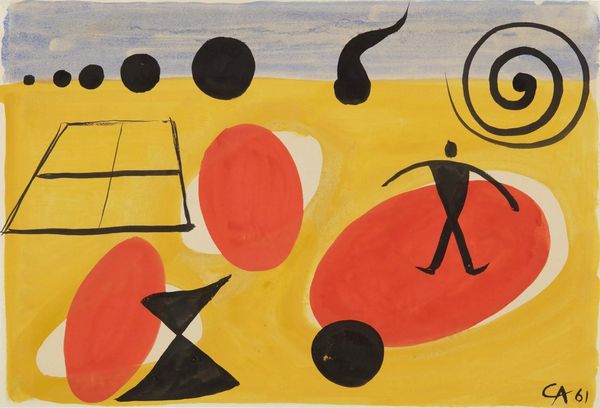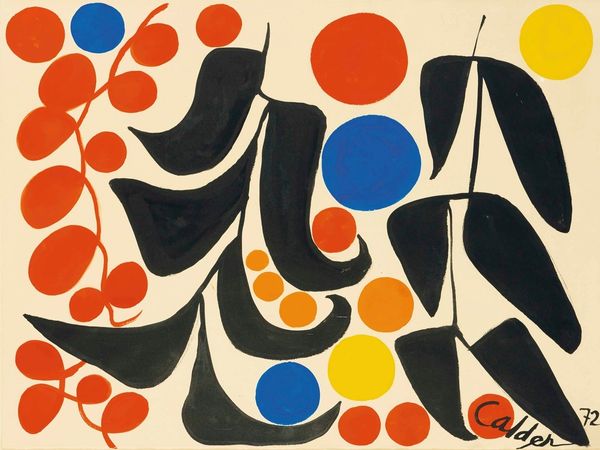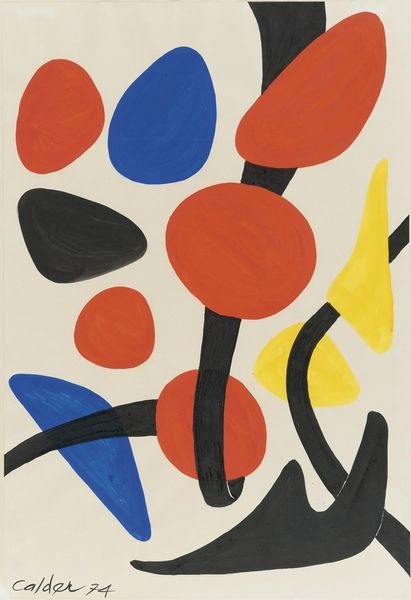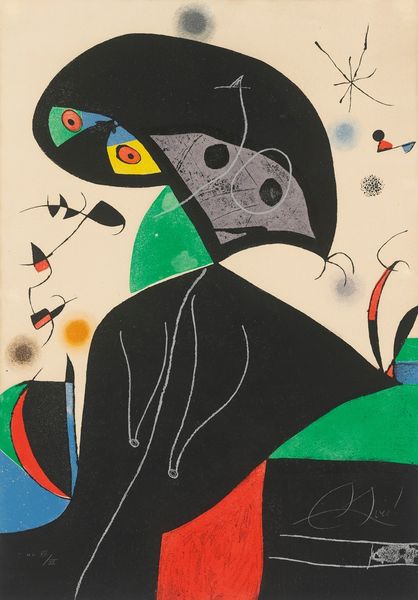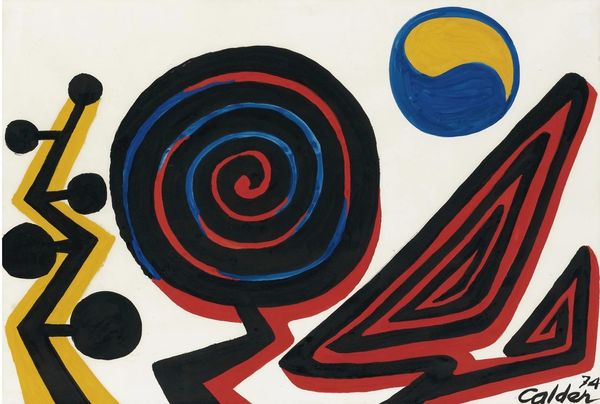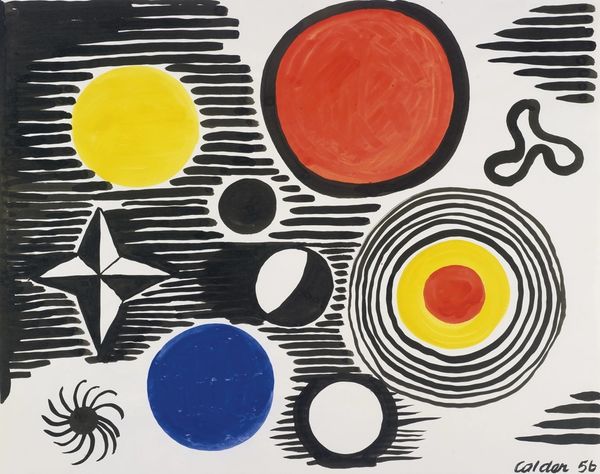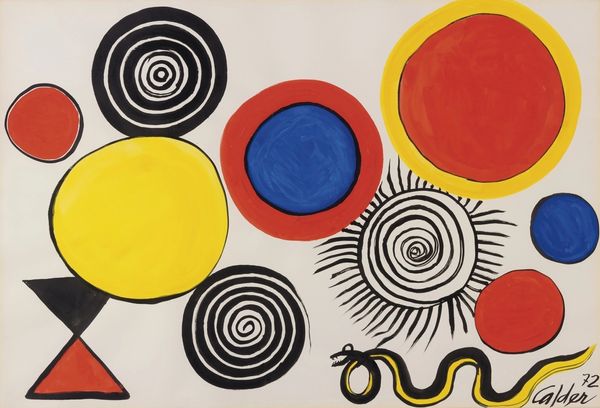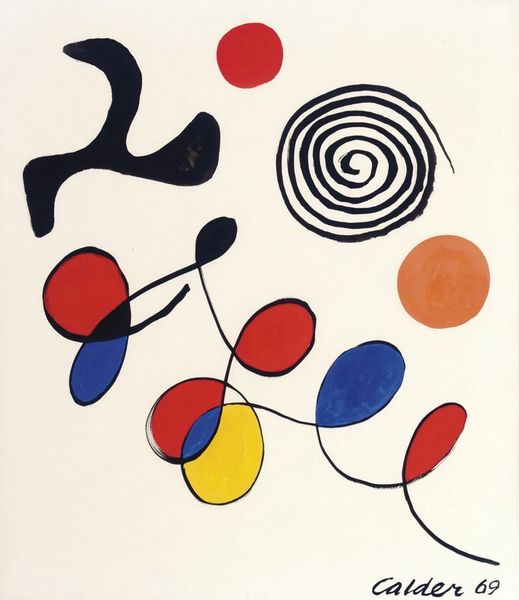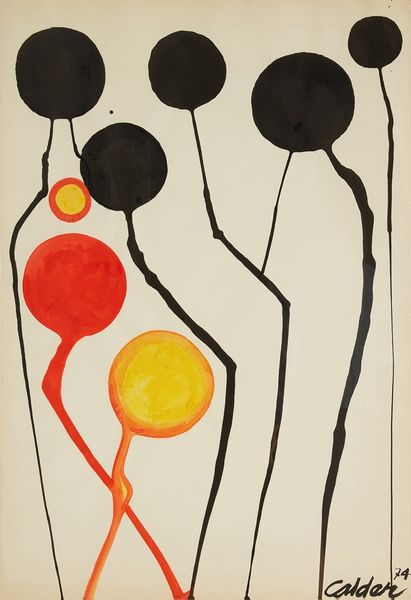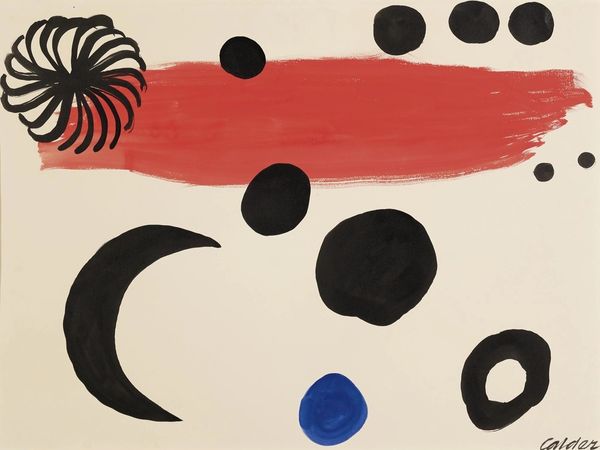
acrylic-paint
#
colour-field-painting
#
acrylic-paint
#
abstract
#
form
#
flat colour
#
geometric
#
abstraction
#
line
#
modernism
Copyright: Modern Artists: Artvee
Curator: I find this a deceptively simple composition. When you first glance at Alexander Calder's "Composition," painted in 1953, what’s your initial reaction? Editor: Whimsical, yet somehow grounded. The basic shapes and colors create a playful energy, but the darker elements suggest a deeper, almost primal, force at play. Curator: Indeed. Calder’s work often gives that impression. What is remarkable to me is that through a vocabulary of very simple shapes like circles and lines he brings forward our human need for symbols and patterns to give meaning to chaos. The bright colours do add a lightness to what would otherwise be a very somber arrangement of shapes. Editor: I agree. Calder was operating in a postwar era, a period of significant upheaval. It’s intriguing how the geometric forms feel both very modern, in line with a progressive post-war sensibility, and perhaps echo ancient archetypes. Circles representing wholeness, lines suggesting movement and direction. Were those shapes perceived as more optimistic for his audience, moving away from overt representation toward pure form? Curator: Precisely. It's tempting to read cultural symbolism into such a basic vocabulary, but Calder was always adamant that his abstract forms did not signify any particular person, object or event. He intended viewers to experience the shapes purely as shapes, and to perceive movement and direction that might reflect the universe in its endless turning and rearranging. It asks a lot of the viewer. Editor: Yet it also speaks to a desire for simplicity and order after so much disruption. I find it really interesting to observe how artistic and institutional validation shifted from figuration toward abstraction. It reveals a complex push and pull of historical context shaping taste. Curator: Absolutely. The museum's display of Calder's work here positions him as part of that pivotal moment when pure form gained widespread public acclaim. His visual language may seem intuitive today, but in its time, it was a powerful act of redefinition. What it holds now, I believe, is the invitation to rediscover visual play, just form, motion and emotion working in balance. Editor: An exercise in symbolic simplicity for complex times. A compelling idea to carry forward, I think.
Comments
No comments
Be the first to comment and join the conversation on the ultimate creative platform.

